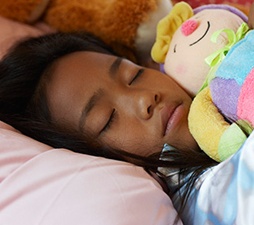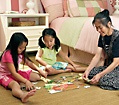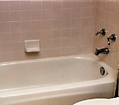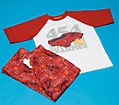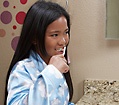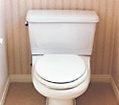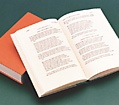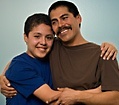New Tools to Help Your Child Sleep
Research[i] confirms what many parents of children with autism already know: children with autism have a higher incidence of sleep challenges, and the more severe the autism symptoms the more severe the sleep challenges. Research,[ii] as well as common sense, also tells us that impaired sleep has a negative impact on physical, emotional, academic, and social functioning.
The good news is that there are new behavioral tools and medical interventions that can help children with autism go to sleep and stay asleep. As you read about these tools keep in mind that you know your child best, so modify these plans to fit your child’s abilities and preferences. Also, think of these strategies as a menu of options. Pick the ones that will work best for your family environment, and start with just one or two strategies at a time.

Most importantly: Be patient! It can take as long as two weeks to see improvements in your child’s sleep.
Sleep Hygiene is Your First Line of Defense
An extensive review of current research[iii] indicates that behavioral approaches that focus on changing the environment are the best treatment for helping improve sleep habits of children with autism. These approaches are called “sleep hygiene,” and they focus on setting up a solid routine and reducing emotional and behavioral stimulation at night. The sleep hygiene approach can be extremely valuable for children with low-functioning autism who may have minimal or no verbal skills, but it can also be modified and used successfully with higher functioning children.
1. Redesign Your Bedtime Routine
Short and Predictable: Children with autism do well with highly structured short and predictable bedtime routines. Whatever routine you may have tried in the past may have gradually become more elaborate and unsuccessful as one bedtime story morphed into three or that last call for a glass of water delayed the final goodnight. It’s important to devise a new strategy to avoid bad habits that may have cropped up.
Soothing: The most important part of the routine is that it be soothing. Every part of the routine should be carried out in a quiet calm manner if at all possible: use a gentle voice, soft lights, and try not to deviate from the plan.
Start Fresh: If you are already using a routine think about where it tends to get off track. Then, set up the following plan by downloading the free cards below from Stages Learning. These can be used as visual cues to help your child go through the bedtime routine in an established order. Because many children with autism have communication deficits, using visual cues can be a crucial step in helping children learn healthy sleep routines.[iv]
2. Make Changes to the Bedroom
Cool and Dark: Make sure the bedroom is cool enough to sleep comfortably. Do not keep a light on, but use a night-light if the bedroom is too dark. Try to have heavy blinds or curtains on the windows to block early morning sun, avoid having a television, radio, or computer on during the night.
Use White Noise: Recent research[v] shows that children with autism tend to prefer having low consistent white noise such as from an air filter, fan, or white noise machine. Invest in weighted blankets if the child prefers to have weight on them when they sleep. New research indicates that these blankets do not impact falling asleep or sleeping longer, but many children with autism like how they feel.[vi]
3. Try These Additional Strategies
- Set a bedtime and stick to it. Set a wake-up time and try not to vary it by more than an hour, even if your child has had a restless night.
- Eliminate Electronics Before Bedtime. Children benefit from not engaging with television and computers before bedtime. A recent study[vii] found a direct connection between boys with autism, video games, and sleep challenges.
- If your child is young and still naps, keep naptime short and schedule it for early in the afternoon.
- No heavy meals, caffeine, or sugar before bed. A small glass of milk or a few pieces of cheese or fruit with crackers are good choices.
- Help you child get a lot of physical exercise during the day and outdoor time. One study[viii] completed last year demonstrated that a daily aquatic exercise program significantly improved the sleep habits of children with autism.
- Children with autism typically need less sleep[ix] than neurotypical children. If your child has trouble falling asleep try delaying bedtime by 30 to 60 minutes.
- Teach your child to go to sleep alone by gradually removing yourself from the bedroom, doorway, hallway etc.
When is it Time to Get Expert Help?
1. If there are Underlying Biological Issues
Sometimes there can be underlying health issues that are negatively impacting your child’s sleep. If your child is having an exceptionally difficult time getting to sleep or staying asleep start by consulting with your pediatrician and consider working with a sleep specialist. Significant and ongoing problems with snoring, bedwetting, or sudden gasping for breath while sleeping all indicate that it is time to consult a professional.
2. If the Sleep Hygiene Plan is not Working
Many parents benefit from a professional workshop on developing a successful sleep hygiene plan. A professional can also help troubleshoot a plan that is already in place.
3. If Medical or Alternative Treatments Appear Warranted
There is new research on medical and alternative therapies that might improve sleep for children with autism. While there are no magic bullets, some studies[xi] indicate that Melatonin supplements are showing promising results. Unfortunately, there is no clear evidence indicating that risperidone, secretin, L-carnitine, niaprazine, mirtazapine, or clonidine are successful in treating sleep issues for children with autism. Always consult a doctor before implementing a medical intervention.
There is mixed evidence[xii] [xiii] supporting the use of alternative treatments: massage therapy and vitamin supplements including omega-3 fatty acids, B complex vitamins, and special diets. These alternative treatments may hold promise; there is just not enough research to back them up at this point.
This video is made using InVideo.io
Resources:
American Academy of Sleep Medicine
List of Specialists by Geographic Location
Behavioral Analyst Certification Board
List of certified ABA Specialists (or ask your pediatrician for a referral).
[i] http://foa.sagepub.com/content/27/4/254.short
http://www.biomedcentral.com/content/pdf/1866-1955-6-44.pdf
http://www.tandfonline.com/doi/pdf/10.1080/07317107.2014.934171
[ii] http://jghcs.info/index.php/bh/article/view/343
[iii] http://www.ncbi.nlm.nih.gov/pmc/articles/PMC4271434/
[iv] http://jghcs.info/index.php/bh/article/view/343/297
[v] http://www.tandfonline.com/doi/pdf/10.3109/17518423.2014.904452
[vi] http://pediatrics.aappublications.org/content/early/2014/07/09/peds.2013-4285.full.pdf+html
[vii] http://pediatrics.aappublications.org/content/early/2013/11/12/peds.2013-2066.full.pdf+html?sid=cf95e6cb-8204-4b76-8920-3fb88e9e8a99
[viii] http://foa.sagepub.com/content/early/2014/11/25/1088357614559212.abstract
[ix] http://foa.sagepub.com/content/early/2014/11/25/1088357614559212.abstract
[x] http://www.autismspeaks.org/docs/sciencedocs/atn/sleep-tool-kit.pdf
[xi] http://www.ncbi.nlm.nih.gov/pmc/articles/PMC3368078/
[xii] Link to both: http://www.tandfonline.com/doi/abs/10.3109/17518423.2014.904452
http://www.cmaj.ca/content/186/7/509.short
[xiii] http://pediatrics.aappublications.org/content/130/Supplement_2/S106.full.pdf+html

L.F. Stebbins, M.Ed. M.L.I.S.
L.F. Stebbins has more than twenty-five years of experience in higher education with a background in library and information science, instructional design, research, and teaching. She has an M.Ed. from the Technology Innovation & Education Program at the Harvard Graduate School of Education and a Masters in Information Science from Simmons College. For twenty years she created and led media literacy and research skills programs for students and faculty at Brandeis University. Currently she is the Director at research4Ed.com and the Director for Research at Consulting Services for Education (CS4Ed). For more about Leslie visit LeslieStebbins.com.


